PC Won’t POST After Swapping CPU Cooler [Causes + Solutions]
When you have trouble with a PC Won’t POST After Swapping CPU Cooler, that is frustrating because you would think a simple upgrade or replacement would improve things.
That may sound like a strange problem, but it’s not. And if you do you know what the trouble is you can fix it right and your system is back up again. In this article, we will discuss the causes of this problem and the possible solutions.
PC Won’t POST After Swapping CPU Cooler [Causes + Solutions]
Swapping a CPU cooler is a common upgrade, but it can sometimes lead to issues like the PC not posting (Power-On Self-Test) afterward. Here are the common causes and solutions to get your system back up and running.
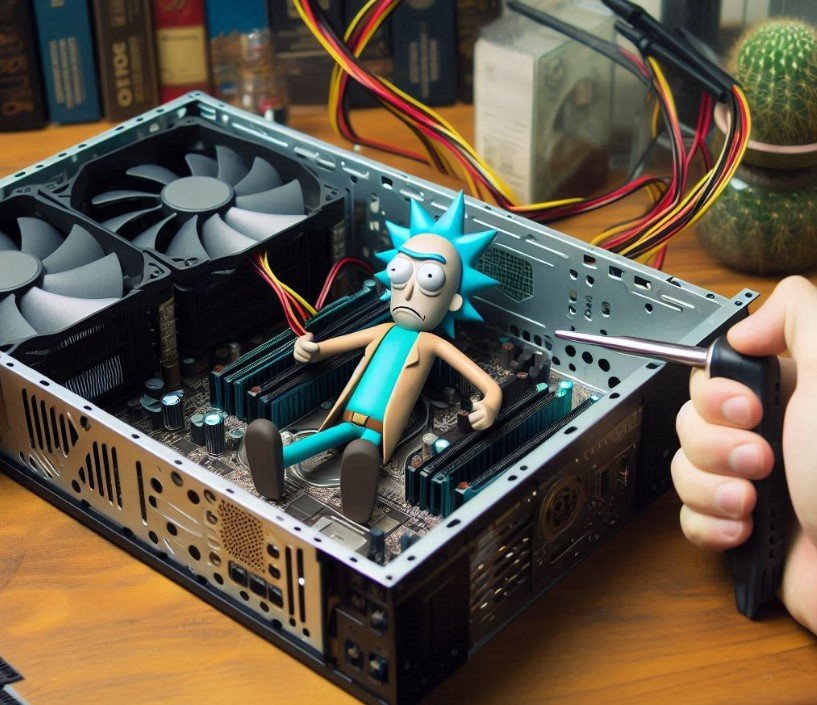
Causes For PC Won’t POST After Changing CPU Cooler
- Improper Installation: If the cooler isn’t seated correctly, it might not make proper contact with the CPU, causing the system to fail the POST.
- Overtightened Cooler: Over-tightening the cooler can bend the motherboard or damage the CPU socket, leading to boot issues.
- Unplugged or Loose Connections: Forgetting to reconnect the CPU fan cable or leaving other connections loose can prevent the system from starting.
- Thermal Paste Issues: Using too much or too little thermal paste can lead to poor heat transfer, causing the CPU to overheat immediately.
- BIOS Settings: Changing the cooler might reset the BIOS settings or require adjustments in the fan speed controls.
My Computer Doesn’t POST After Changing CPU
- Check Installation: Ensure the cooler is properly seated on the CPU and mounting hardware is correctly installed.
- Loosen Cooler Screws: If the cooler is too tight, try loosening the screws slightly to see if it resolves the issue.
- Reconnect Cables: Double-check that all power cables, especially the CPU fan header, are securely connected.
- Reapply Thermal Paste: clean off the old thermal paste, if necessary, and apply a small, even amount.
- Reset BIOS: If the system still fails to post, try resetting the BIOS by clearing the CMOS. This can often resolve issues caused by incorrect settings.
By carefully addressing these potential issues, you should be able to resolve the problem and get your PC back to normal.
Why PC Doesn’t Post After Changing CPU Cooler?
If your computer doesn’t POST after you’ve replaced the CPU cooler, it’s probably because the cooler isn’t seated on the CPU right causing overheating or no contact. Here are some reasons and solutions to get your system online again.
Improper Installation
Improper installation is the most common reason your computer doesn’t POST after changing the CPU cooler. If the cooler isn’t sitting right on the CPU, then it’ll either burn out the CPU or won’t even touch the motherboard.
Solution: Double-check the installation of the CPU cooler. But be sure to apply it all over the entire CPU. And be sure to spread the thermal paste.
Loose or Disconnected Cables
In the cooler installation, maybe some wires, such as the 8-pin CPU power connector could have been dislodged or become loose.
Solution: All the power cables are seated properly in the motherboard, especially the CPU power cable. Also, inspect other connectors such as the 24-pin motherboard power connector and any fan connectors.
Bent CPU Pins
The pins in the CPU can be bent when replacing the cooler, like the Intel processors, and if that happens the system will not POST.
Solution: Carefully inspect the CPU pins on the motherboard. If any are bent, they will be carefully bent with a small tool.
Over tightening the Cooler
The CPU cooler if over-tightened can warp the motherboard or damage the CPU socket, which would cause POST problems.
Solution: If you think you over-tightened it, then you may want to slightly back off the cooler and try to boot the system once again.
BIOS Settings
Sometimes after swapping out the cooler, the system needs a BIOS reset to recognize the new hardware.
Solution: Try clearing the CMOS by taking the battery out or using the jumper method on the motherboard then boot the system.
Faulty Cooler or CPU Damage
If all else fails the cooler may be just a lemon, or the CPU got damaged during installation.
Solution: Try the cooler on another system, if not take it to a professional, and have them look at the CPU, and possibly the motherboard.
If you’ve taken a computer apart recently to change the CPU cooler and now your machine doesn’t POST, these Troubleshooting steps should help you get your system back up and running again.
Why Is My Computer Not Posting After CPU Change?
If your PC won’t post after changing the CPU cooler, check that the cooler is correctly installed and properly seated on the CPU, as improper installation is a common cause of post issues.
All wires are seated properly (especially the CPU fan header), because if they’re not, then the system won’t boot.
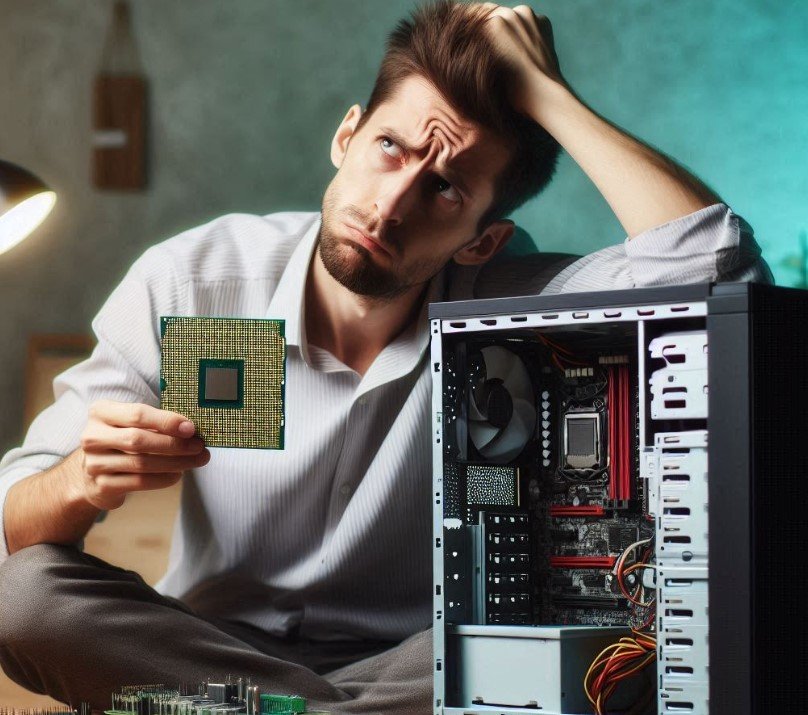
However, you may have to wipe off the old thermal compound and spread a nice, even coat on to guarantee the best possible heat waste from the CPU to the heat sink.
It’s the same steps, but the same problems could occur while installing a new CPU or cooler. If not then try clearing the CMOS and resetting the BIOS, that should take care of any problems caused by the cooler swap. These should get your PC back in working order.
Can A Faulty CPU Cause No POST?
Yes, a faulty CPU can cause your PC not to POST (Power-On Self-Test). The CPU is damaged or not working and in turn won’t allow the motherboard to set the hardware parts, so no display or error codes while booting.
It’s one of the main reasons for What Can Cause A PC Not To POST? No response from the system or constant beeping can also be a sign of a bad CPU. The first step in analyzing the problem would be to swap out the CPU for a known good one to see if that is the culprit.
PC Won’t Post After Changing Heatsink
However, if your computer won’t POST with a new heatsink, there may be a duo of problems. One thing that might be faulty, though, is that the CPU might not been seated properly/at all when applying the heatsink.
The heatsink could also be too tight and the motherboard is bowing under pressure to put pressure on the CPU, which would prevent the system from Posting.
The other thing is that possibly some of the thermal paste got onto the CPU socket or motherboard and is causing a grounding/contact problem.
And of course, one should also check the wires, (particularly the CPU power connector, to ensure that they are seated correctly since they could have come loose during the procedure.
Simply reseating the installation, and checking to see if the CPU and heatsink are seated correctly usually clears the problem.
PC Won’t Post After Changing Fan Header
If your PC won’t POST after changing the fan header, it could be due to a short circuit or improper connection. Here are the steps you should follow:
- Check CPU Compatibility
- Update the BIOS
- Reinstall the CPU
- Re-seat the RAM
- Check Power Supply
- Clear CMOS
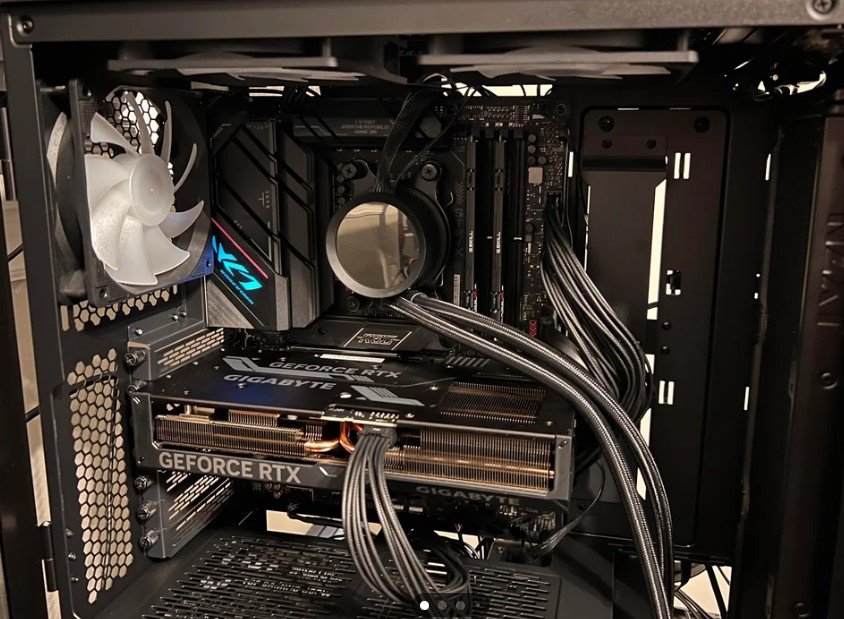
Well, as long as that fan header is seated and none of the pins are bent or damaged. Or perhaps your motherboard doesn’t even have a fan-compatible header for the new fan.
Also, it could be some sort of fan error, the system itself recognizes that there is a missing or bad fan and refuses to start up. Double-check all connections to ensure they are secure. If it doesn’t work then, just return to the original setup and see if it works then.
PC Not Posting After CPU Upgrade
If your PC isn’t posting after a CPU upgrade, several factors could be causing the issue:
- First Cause: Check that your new CPU is compatible with your motherboard by verifying the socket type, chipset, and BIOS version. In many cases, updating your BIOS to the latest version is important, as an outdated BIOS may not support the new processor.
- Second Cause: Then check for compatibility and put the CPU back in making sure that it is seated in the socket correctly and that none of the pins are bent. Applying thermal paste correctly is also very important. Also, try reseating your RAM modules to rule out any contact problems. Your power supply should be sufficient to handle the new CPU’s power requirements; if not, consider upgrading your PSU.
- Finally Cause: Clearing the CMOS to reset your BIOS settings can resolve potential conflicts after hardware changes. If your PC still won’t post, seeking professional help might be necessary.
My PC Wont Post After Restarting
There are hundreds of reasons why your PC won’t post after restarting. Some of them are mentioned below:
- The first thing to test is your power supply, because if that is out, then the system will never get past the POST. May also be overheating so check to see if your CPU and GPU are overheating and that all your cooling fans are operational.
- Loose connections are another good thing to check for; be sure that all power cords are seated especially the CPU power connector and that your RAM and other components are seated properly.
- If you have recently changed anything in the BIOS, you could try clearing the BIOS back to its factory defaults, which can be done by either removing the CMOS battery or the reset jumper on the motherboard itself.
- Lastly, it could be a hardware problem, such as the motherboard RAM or CPU, so try resetting the RAM and taking out some unnecessary components to see if the system will post. If the problem persists, professional help may be necessary.
No Fan Spin / No POST On New PC Build
My new PC is built with no fan spin and won’t POST, so it’s either power delivery or an installation issue. Let’s discuss the causes for No Fan Spin / No POST On New PC Build:
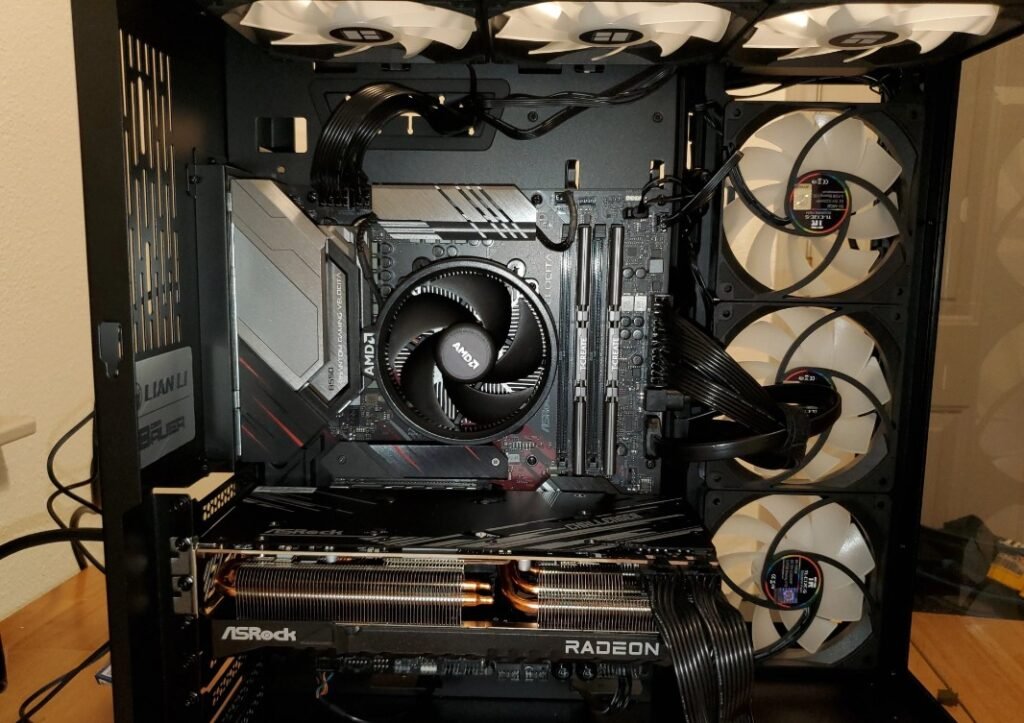
- The first thing to check is the power supply, make sure it is plugged into the motherboard correctly, and that the 24-pin ATX along with the 8-pin CPU power connectors is seated in.
- Make sure the power supply is on and working. If it is getting power but just will not spin up, then look for shorts on the motherboard, loose standoffs, or metal trash. Also, check to see that the CPU is seated correctly in the socket and that the CPU cooler is installed correctly because if it’s put on too tight it can cause problems.
- Lastly, just check to see that the RAM and other stuff are seated properly. If all connections are true and the problem still exists, then try testing the system with another power supply, or contact a technician to determine any type of hardware problems.
Why Is My New PC Build Not Posting?
There are a few reasons why your new PC build won’t post:
- First, check all power connectors, the 24-pin ATX, and 8-pin CPU connectors, and make sure they are firmly seated in the motherboard.
- Then check to see if the CPU is seated correctly in its socket, and if the cooler is on correctly but not too tight because that will also cause problems. Make sure the RAM sticks are in the correct slots.
- It’s also important to confirm that your motherboard supports the CPU, and if necessary, update the BIOS to the latest version. And be sure to inspect the shorts, like some metal standoff or screw touching the motherboard where it shouldn’t.
- When trying to diagnose a problem, test by booting up only with the necessary parts (CPU, RAM, and GPU if applicable) to single out the cause. If it still doesn’t work then you have to start testing parts or take it to a professional to see what is wrong with it.
Computer Won’t Boot After CPU Upgrade
There are too many things to check if your computer won’t start up after a CPU upgrade. Let’s have a look at some reasons for Why Is My Computer Not Posting After CPU Change:
- The first thing is that your new CPU is compatible with your motherboard, or your system won’t boot at all.
- Also, sometimes to use the new CPU your motherboard needs a BIOS update, so be sure that your BIOS is up to date.
- Also, the CPU itself may not be seated properly in its socket, or the CPU cooler might be too tightened or not properly aligned, which in turn will cause problems in the boot. Also, it’s good to check that the CPU power connector is firmly seated, a common cause of boot failures is a loose connection.
- Lastly, just verify that all other parts (RAM, power cables, etc. are seated correctly, because they may have been jostled during the upgrade process. If it still does that try testing the system with the old CPU and see if the new CPU is just defective.
PC Doesn’t Turn On After New CPU Cooler
If your PC doesn’t turn on after installing a new CPU cooler, the issue may be related to the installation process.
- The first thing to check would be the power cables, and make sure they are seated properly in the motherboard. Sometimes these wires come loose when installing a new cooler.
- Next, ensure that the CPU cooler is correctly installed. Or if the cooler is on too tight or not lined up correctly then it will warp the motherboard and therefore not make good contact with the CPU or any other components and the computer won’t start.
- Likewise, be sure that no thermal compound has leaked onto the CPU socket or motherboard because that will cause shorts.
- In the end, inspect the fan connections to the motherboard. Some motherboards will not even power up if the CPU fan header is not connected properly as a safety feature.
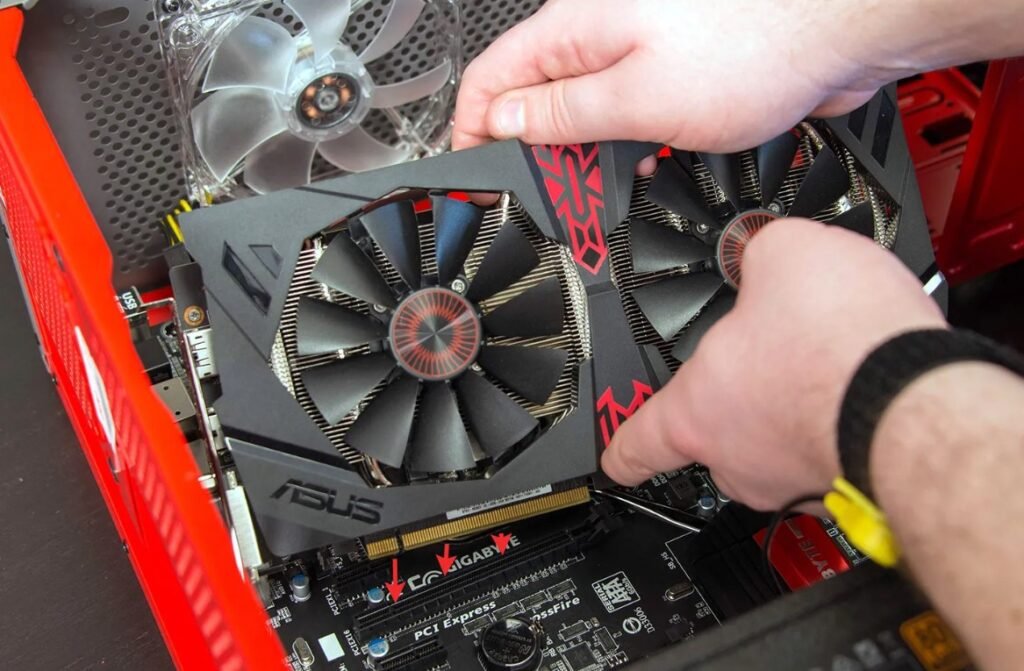
Make certain all connections are secure, and if that does not work, consider removing and reapplying the cooler (making sure everything is lined up and connected). If it doesn’t work you might have to troubleshoot more or talk to an expert.
Mounted New CPU Cooler, Now PC Doesn’t Boot Into BIOS
If your PC doesn’t boot into BIOS after mounting a new CPU cooler, several factors could be causing the issue:
- The first thing is to check to make sure the CPU cooler is not too tight, because if it is, it can warp the motherboard enough so that it does not make good contact with the CPU, or other components, and thus the system will not boot.
- Then make sure the CPU is seated properly in its socket. A new cooler may have moved the CPU just enough to make bad contact. Also, confirm that the CPU power cable is securely connected, as it may have been loosened during the cooler installation.
- Also look for any sign of short circuits on the motherboard, like the thermal paste oozing over the CPU socket or parts being knocked out of place. Make sure the CPU fan header is plugged into the motherboard, a lot of systems won’t even boot up if they don’t sense a working CPU fan.
- Lastly, attempt to clear the CMOS either by taking out the battery or using the jumper on the motherboard. That should clear the bios settings, and perhaps allow the system to acknowledge the change. If not try and reapply the cooler, make sure that everything lines up and is connected properly, if not take it to a professional.
PC Completely Dead After CPU Cooler Swap
If your PC is completely dead after a CPU cooler swap, with no power or signs of life, the issue could be related to the installation process.
- First, try checking the power connections, make sure the 24-pin ATX and 8-pin CPU power connectors are fully seated into the motherboard. Sometimes these get loose when installing the cooler.
- Next, inspect the CPU cooler installation. If the cooler is on too tight then it can warp the motherboard enough that it doesn’t make good contact with the CPU or shorts something out so that the system won’t power up. There’s also no sign of any thermal paste leaking onto the motherboard because that can cause shorts.
- Additionally, check that the power supply is functioning properly. You can do this through an easy “paperclip test” or if you have the availability to another system. Also, check that the CPU fan header is plugged into the motherboard, some won’t even power up if they don’t sense a CPU fan.
PC Not Booting After Changing CPU Cooler
If your PC isn’t booting after changing the CPU cooler, the problem might be related to the installation process or components that were inadvertently affected.
The CPU cooler should not be too tight. Warp the motherboard or the CPU or other components won’t seat correctly, and also that the CPU socket and the CPU fan are plugged into the proper header on the motherboard because on some systems it will not start at all if the CPU fan is not recognized.
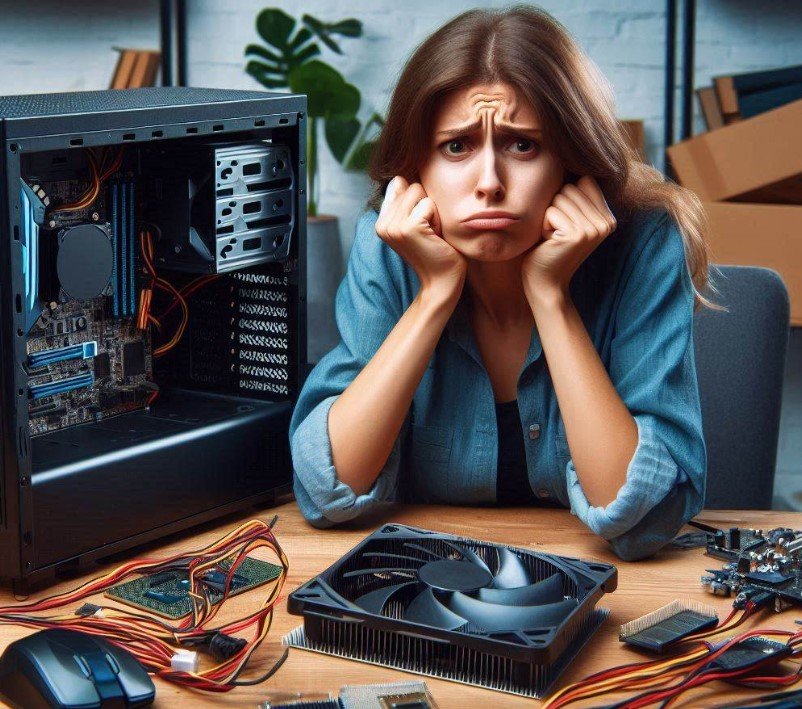
That could be cleared by clearing the CMOS and resetting the BIOS, though, because that would erase any possible corrupted settings. If the PC still will not boot, try testing the power supply to see that it is working properly the cooler is back on to check that everything is lined up correctly. If not, then the hardware may need to be looked at.
Why Won’t A Computer Turn On After Installing A New CPU Cooler?
If your computer won’t turn on after installing a new CPU cooler, it could be due to several common issues:
- Incorrect Cooler Installation: The damn cooler is not seating on the CPU and it is overheating and will not let the system boot up.
- Loose Connections: It must have been the cold air from the cooler that loosened some more connections, namely the CPU power cable. Ensure all cables are securely connected.
- Thermal Paste Issues: If the thermal paste is applied incorrectly (too much or too little), it could lead to poor cooling and prevent the system from booting.
- Short Circuit: If any of the metallic pieces are contacting the motherboard or other components then the cooler is shorting something out.
- Faulty Cooler or Fan: Hell, even a crappy cooler or fan will cause the system to not boot because the motherboard knows something is amiss and refuses to start up.
Therefore, by checking each of these items, you can easily determine why your computer will not boot up after you have replaced the CPU cooler, and your system will be up and running again.
Why Did My Computer Not Boot After Installing CPU Cooler?
If your computer did not boot after installing a CPU cooler, it could be due to several common issues. That might be because the cooler was not seated properly on the CPU so it overheated and the computer would not boot.
Another issue could be loose or disconnected cables, particularly the CPU power cable, which may have been accidentally disturbed during the installation process. Not only that, but if the thermal paste is not applied correctly, then it will not transfer heat properly and it will overheat and won’t boot.
It could be that the cooler is shorting something out if any of the metal is touching the motherboard or any other components. And finally a bad cooler or fan not spinning at full capacity will trigger the motherboard’s safety mechanisms and keep the computer from starting, just to save the CPU.
These are things you could check to troubleshoot why your computer wouldn’t boot up after you installed a CPU cooler.
After Replacing CPU Cooler, PC Doesn’t Power On
There could be many reasons why your computer doesn’t power on after you’ve changed the CPU cooler. That’s probably because the new cooler doesn’t press down on the CPU hard enough so there isn’t any contact and the CPU overheats and then the system won’t start up.
If you didn’t take the time to hook everything back up right after you installed the card you pulled out or knocked loose some serious connectors, such as the CPU power connector, which would have only prevented the computer from booting in the first place.
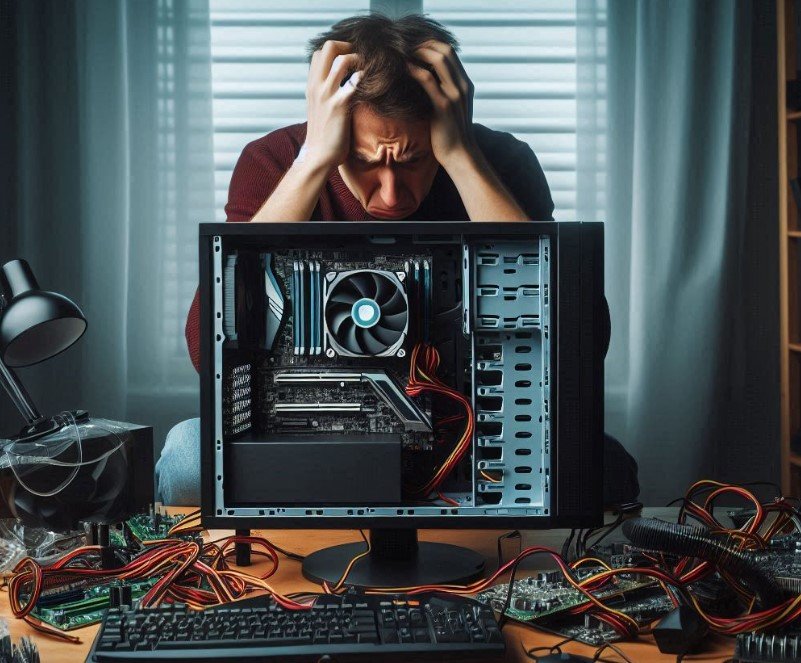
Or maybe the thermal paste was put on wrong, too much or too little, so the heat transfer was not as effective as it could have been, and consequently, the processor fried. Then of course there’s always the possibility that the cooler or one of the mounting brackets or something is grounding something out by contacting the motherboard or other components.
Finally, if the new cooler/fan is bad or not spinning the motherboard would sense this and keep the PC from starting up as a safeguard to the CPU. If you are having trouble getting your pc to start up after you replaced the CPU cooler, you should check these out.
Computer Won’t Boot After New CPU Cooler And Gets Into Reboot
If you install a new CPU cooler and your computer does not boot but gets into some sort of reboot cycle, then it might be due to one of the following common problems:
- Improper installation of the cooler or misapplication of thermal paste over the CPU can cause overheating and continuous rebooting. Another very common cause is a faulty or non-spinning cooler fan.
- Moreover, loose or unconnected cables may also be the fault, and, in some cases, a BIOS reset may help if the new cooler comes with advanced functionalities.
These will help deal with the issues of why your computer won’t boot after installing a new CPU cooler and keeps rebooting.
Conclusion
If your PC doesn’t post after swapping the CPU cooler, it usually boils down to a few common problems installation, loose connections, or over-tightened cooler mounts.
The thermal paste can also be applied improperly. Resetting the BIOS might also do the trick. Look at these factors, and you will resolve the problem and have the system up and running again. That’s all I have on What Can Cause A PC Not To POST?
People Ask Question
Why did my PC not post after changing the CPU cooler?
Your PC may not post due to improper installation of the cooler, loose power connections, or an incorrect BIOS setting. Check for any hardware disconnections or errors in the cooler installation.
What should I do if my PC won’t post after a CPU cooler swap?
First, ensure that all connections are secure and that the CPU cooler is installed correctly. Try resetting the BIOS by removing the CMOS battery for a few minutes or using the reset jumper on the motherboard.
Can a CPU cooler swap cause overheating?
Yes, if the cooler is not installed properly or if thermal paste is not applied correctly, it can lead to overheating. Always ensure proper installation and thermal paste application to prevent this.
How can I check if my CPU cooler is functioning?
Monitor the cooler’s fan for movement and listen for noise when the system powers on. You can also check the BIOS settings for CPU temperature readings.
What if all else fails and my PC still won’t post?
If your PC still won’t post after checking everything, consider testing with a different cooler or consulting with a professional technician, as there may be other underlying hardware issues.






